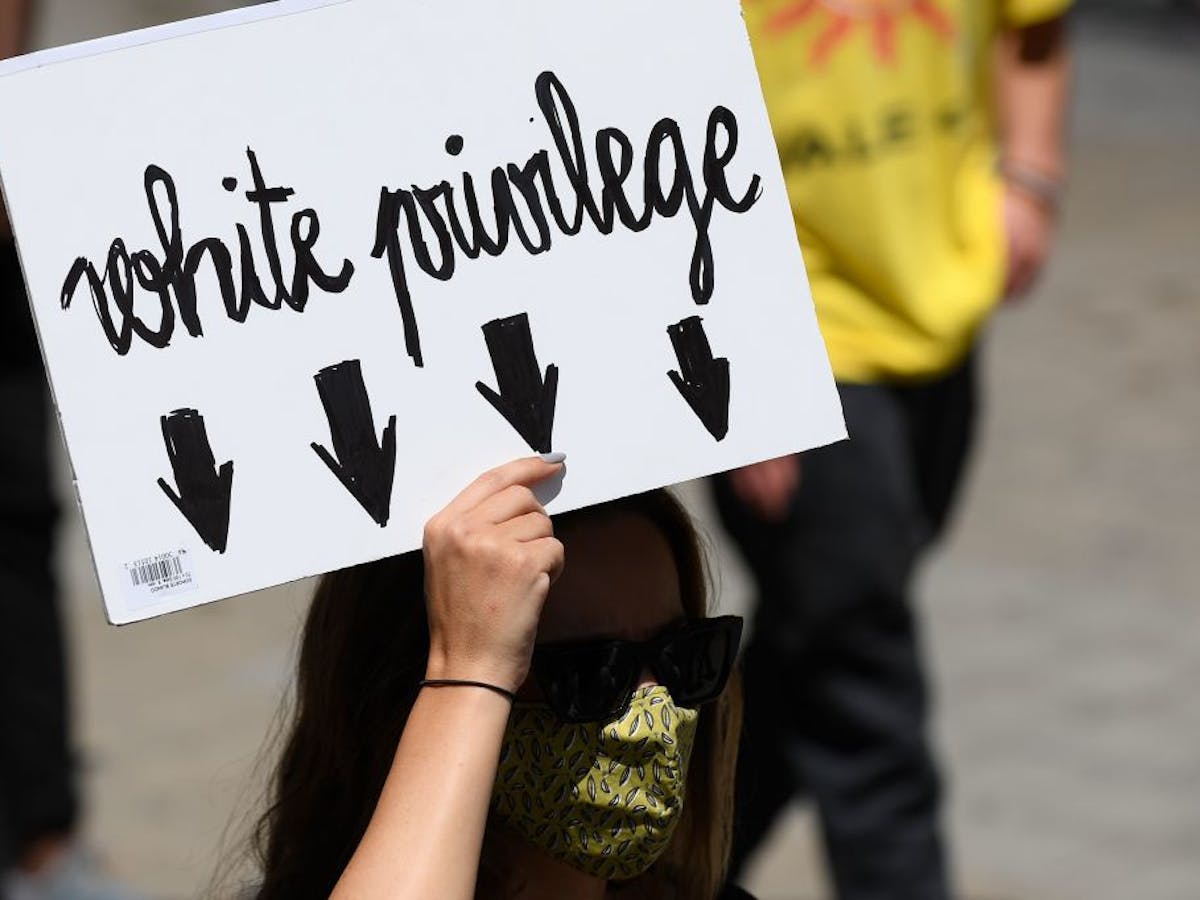A friend posted on Facebook his regrets for his “white privilege.” “Know your history,” he prodded. And a lot of others chimed in with their woke assent. Virtue was roundly signaled.
I wish he did know his history. The myth of “white privilege” has emerged and is possible only because the left first went through our schools and suppressed the teaching of history. As with most things, the official line is the opposite of the truth. There is non-white privilege. There is no white privilege.
At the present day, demonstrably, in Canada, “non-whites” are systemically privileged over whites. Special aboriginal rights are enshrined in the Canadian Charter of Rights and Freedoms. Without this special exemption, the preferences given to aboriginals would be in violation of the equality rights given in the charter.
The complex of “affirmative action” preferences in government programs, education, and corporations are a blatant violation of equality rights. They ought to have been challenged long ago. Nobody has. Such is the overriding power of non-white privilege.
One might argue that such special benefits are needed to counterbalance discrimination in the wider society—some hypothetical society beyond government, the media, the corporations, and the education system. Perhaps the alleyways? Perhaps the schoolyard at recess?
Yet even at a social gathering, it is socially acceptable to mock “rednecks,” but not aboriginals or blacks. It is socially acceptable to mock Christians, or “bible thumpers,” or evangelicals, but not Muslims. It is socially acceptable to complain about Americans, or the English, or Europeans, or whites, but not Blacks or Indians or South Asians.
Even in the past, when it was okay to mock Indians or Chinese or blacks, it was at least as socially acceptable and as common to mock the Irish, the Scottish, the Polish, the Ukrainians, the Italians, or the Jews. All white, or considered “white” today.
The proponents of the premise of “white privilege” will no doubt counter that all such current forms of discrimination and non-white privilege are merely “equity,” a leg up for past discrimination against non-whites. Even if this discrimination was against individuals now long dead, it supposedly leaves marks and social inequities that persist today.
The idea, then, that Canadian history has discriminated against non-whites.
I challenge that, firstly on the basis that “white” and “non-white” are terms that would have meant nothing to our ancestors. This particular racial division emerged in the US and in South Africa, particularly in reference to the Civil Rights movement and apartheid, about the middle of the twentieth century. These were never meaningful categories in Canadian society, if only because few Canadians had come in much contact with anyone not of European ancestry. There was little chance to discriminate against people not present, and “white” or “non-white” was not top of anyone’s concerns.
Rather, popular discrimination in Canada was on the grounds of religion, language, and ethnicity. No Irish need apply, for example.
You might argue that, if Canada lacked Africans, they had the “First Nations.” But the treaties and the Indian Act always systemically favoured the First Nations. A survey of Canadian literature and popular culture demonstrates that, far from denigrating Indians, Canadian culture has always elevated them as romantic and heroic, and identified with them.
Canada has also had East Asians in significant numbers, for at least as long as Canada has been in legal existence. Probably every small town across English Canada has long had one or two or more Chinese families. And they have certainly faced discrimination: head taxes. The Japanese were interned during the Second World War.
But about that internment. It was not a case of racism; perhaps of ethnicity. For Ukrainians were similarly interned during the First World War, and even during the second, the majority of internees were not Japanese. Germans and Italians were also interred. The fact that the Japanese internment is remembered as something special is arguably an example of modern race preference, not past racial discrimination.
And, counter to theory, despite discrimination in the recent past, Asian-Canadians are doing better in Canada today than most demographic groups. And many current “equity” programs discriminate against them, just as they discriminate against “whites.”
And as to past white privilege, by all means, read your history. Read about how most of the ancestors of the “white settlers” came. Read about indentured servitude, read about the Great Hunger, read about the Highland Clearances. Read about the expulsion of the Acadians, read about the Home Children, read about the Holodomir, read about the Holocaust. Then tell me that white Canadians benefit from historic privilege due to the colour of their skin.
For these are the backgrounds from which the great majority of European Canadians descend. They were not members of a wealthy upper class, as more recent immigrants tend to be.
Those who might be doing well today have worked their way up from ancestral backgrounds as dark as those of any non-Europeans. Most arrived in Canada destitute, many in bondage.
Apart from the history, if only we taught literature in our schools, we would know better than to believe in “white privilege.”
Let’s look only at the issue of indentured servitude. Up to the American Revolution, two thirds of all European immigrants to the British possessions in the New World came as indentured servants.
I quote from the first paragraph of Swift’s “A Modest Proposal,” describijng life in 18th century Dublin. The piece is satire, but for the satire to land, it has to be accurate in its description of actual life in Ireland.
“These mothers, instead of being able to work for their honest livelihood, are forced to employ all their time in strolling to beg sustenance for their helpless infants who, as they grow up, either turn thieves for want of work, or leave their dear native country, to fight for the Pretender in Spain, or sell themselves to the Barbadoes.”
What is that about? Sell yourself to the Barbadoes?
And all this well before the Great Famine.
And again:
“I am assured by our merchants, that a boy or a girl, before twelve years old, is no saleable commodity, and even when they come to this age, they will not yield above three pounds, or three pounds and half a crown at most, on the exchange.”
What? Children and teenagers were bought and sold? And so cheap?
They were then shipped out to the so-called “settler colonies” as indentured servants. On Christian principles, they were only selling their labour, not themselves. But in practice, they lived the same lives in the same conditions as the African slaves for the fourteen years of their servitude.
Indeed, quite likely worse lives. An African slave was yours for life; it made sense to preserve his health. But if you have him for only another few years, it makes financial sense to work him to death.
Have you ever noticed how many “African-Americans” have Irish-sounding surnames? Shaquille O’Neill. Bill Cosby. John Coltrane. Countee Cullen. Marcus Garvey.
Did you ever wonder why?
The black slaves and the Irish indentures lived and worked together. They naturally intermarried.
Fourteen years of slavery might not sound so terrible. But the average lifespan for an Englishman in the 18th century was 34 years. It was surely lower in Ireland, due to poverty and malnourishment. Fourteen of those years was therefore significant. In fact, more than half of indentured servants died in servitude.
Slavery was abolished throughout the British Empire in 1834. Indentured servitude was banned in Canada only in 1917.
And who owes whom reparations for that? Should the grandchildren of slaves be paying reparations to the great-great grandchildren of slaves held in some other country?




























